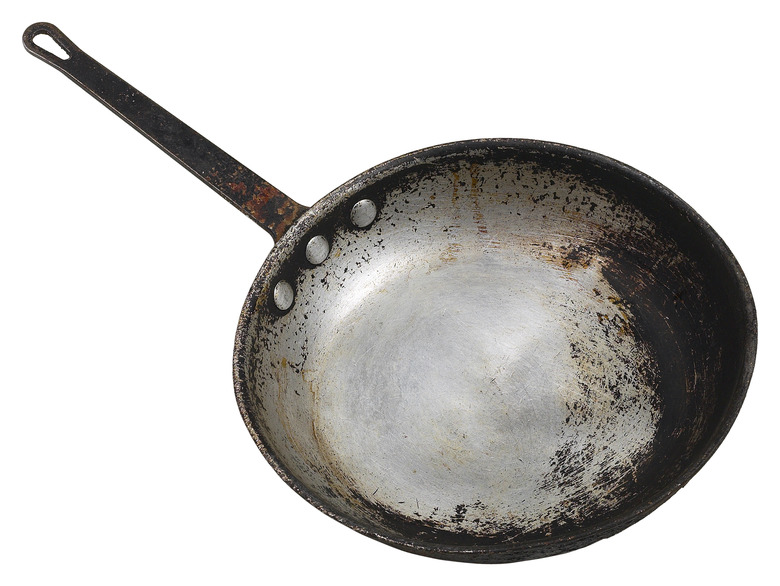How To Flatten A Warped Frying Pan
Things Needed
-
Towels or rags
-
Hammer or mallet
-
Firm work surface
Tip
Many pans warp because they have been left on a hot burner too long. Most cookware comes with instructions that include proper temperature ranges to use during cooking; going beyond this range puts extra stress on the pan. Plunging a hot pan into cold water also causes warping and should be avoided.
Metal cookware is manufactured to different thicknesses. Generally speaking, the thicker the cookware, the better its quality is. The gauge number reflects the thickness, and the higher numbers indicate the thinnest castings. When shopping for cookware, keep in mind that thin metals warp more quickly and may not be as good a value. If your pan is made of thin metal, you may be able to repair it simply by pushing down hard on the warped area to pop it back into place.
Warning
When repairing an enamel-coated frying pan, note that the finish may crack if you hit it with a hammer or mallet. Rather than damage the pan further by trying to fix it yourself, you may want to take advantage of the warranty, if it is still in effect.
Keep in mind that any warranties still in effect will most likely be nullified if you try to repair the pan yourself, and you may be left with no choice other than to continue to use the pan as it is or replace it with a new one at your expense.
Frying pans are made from a variety of materials and are subject to warping due to the temperature extremes used during cooking. A warped pan doesn't sit snugly on the stove burner; it wobbles around and conducts heat poorly. You can repair it by tapping the bulge back into place. This can be a short- or long-term fix, depending upon the type of pan. For an expensive pan, it may make more sense to take advantage of the warranty and return it to the manufacturer rather than trying to repair it yourself.
Step 1
Lay a towel or rag on a firm, flat surface such as a work bench, a kitchen counter or the floor.
Step 2
Place the warped skillet on the cloth open side up if the warp is convex, or facing up, or open side down if the warp is concave, or facing down.
Step 3
Place a second towel or rag over the bulge to protect the pan's surface.
Step 4
Tap lightly on the warp at first with the hammer or mallet until it returns to its original shape and increase the force if the bulge is stubborn.
Step 5
Inspect the skillet on the other side and repeat the procedure until no bulge appears on either the inside or outside of the pan.
Step 6
Remove the towels or rags and place the pan on a flat surface to test for evenness. Repeat the procedure if the pan still wobbles.
Step 7
Wipe out the inside of the pan if it is coated with a nonstick finish to remove any bits of coating that may have come off during the repair process.
